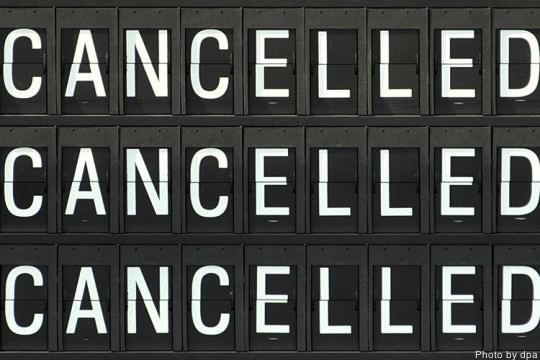Planes, Trains and Startup Exits

During the snowstorm of January 2016, travel basically stopped from airports in places on the East Coast of the US like New York City. People couldn’t get out.
And even when the weather cleared up, the travel problems continued. Imagine your chances of getting out from an airport on time when more than 3,900 flights are canceled in one day. You have as much chance of flying on an airplane as a flying on a snowflake in this kind of situation.
Similarly, there has been a lot of talk about a startup winter during in 2016. The consequences don’t look great for everyone involved. Especially people waiting for startup exits.
The last plane just departed
Did startups and investors miss getting the last seats on the startup exits airplane out of startupland? During 1Q2016, we witnessed the IPO of SecureWorks, which is a tech company though not exactly a classic venture backed startup. This promptly resulted in zero excitement during the aftermarket.
If there are no new tech companies going public for IPOs, what other modes of exits exist? The traditional US tech giants are slowing down their M&A activities. The trend at Google is well known while many others are being distracted by activist investors to pursue more share buybacks. Of course Facebook is always a wild card but that’s a pretty short list.
So it seems like both the IPO and tech M&A exit airplanes really have left the airport and everyone still waiting is stuck. That’s terrible news for startups and investors.
Forget about flying
Would other types of exits be possible? As a very rough proxy of how important tech companies are, the sector breakdown of the S&P500 Index shows that tech is the largest sector at about 20% of the total index.
That still leaves 80%. Traditional non-tech companies are clearly big, but are they interested? They’re not flashy, so think of them as trains. Yes, they are increasingly getting involved in startup ecosystems, including M&A exits. Most of these are smaller deals which work very well for capital efficient startups. So that may not leave much space to cram many unicorns inside. But there are also larger outliers, like Monsanto buying Climate Corp or GM buying Cruise.
There are obviously differences between planes and trains. So before running to catch a train, it’s worth understanding what you’re getting into. But at the very least there’s an alternative way to get an exit. For some startups, the train may actually be the better choice.
There’s no way on earth we’re going to get out of here tonight
Beyond trains, is everyone else simply stuck with no hope? Sticking with the airport analogy, there’s another entire building which most people haven’t noticed.
It’s called the international terminal.
The international terminal is gigantic and has umpteen airplanes, plus high-speed trains too, with heaps of seats looking for passengers. Companies from China are leading in activity and the momentum shows no sign of slowing. Importantly, it’s not just China – cross-border M&A is a global trend.
Why is this happening now? These global companies are just starting to feel the potential opportunities, and more importantly risks, of tech innovation. For people living and working around the Silicon Valley tech sector, the mantra of software eating the world is old news. But for companies on the outside looking in, the impact is just starting to be realized.
So whether it’s late or early depends on your relative position. If you’re trying to catch a domestic airplane for a startup exit, it may be too late. Instead, check out the train schedule. Even better, head over to the international terminal where the planes and trains still have plenty of seats available.
Just in case, make sure to keep an eye on international weather conditions.
